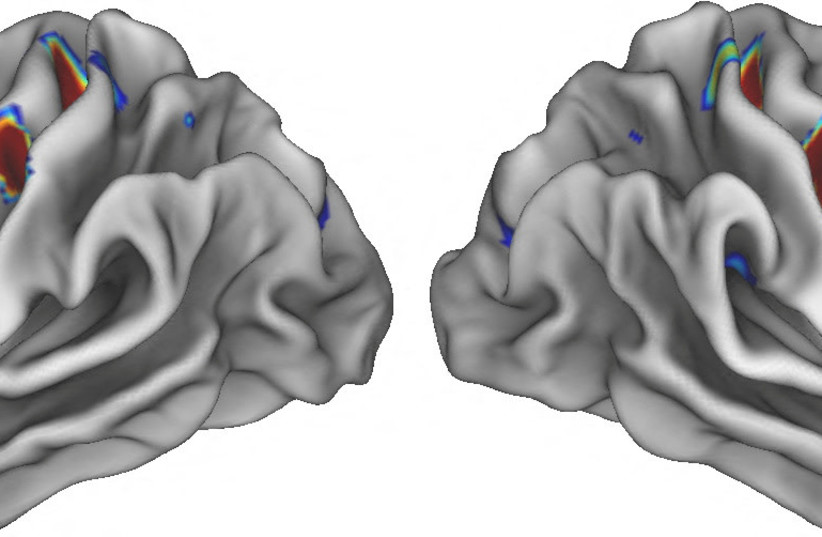Glioblastoma multiforme (GBM) is the most common primary brain cancer – one that begins in the brain itself rather than spreads from other organs. About 250 Israelis, most of them adults, are diagnosed with it in an average year. All glioblastomas are grade IV brain tumors, meaning they contain the most abnormal-looking cells and are the most aggressive. The average survival time after surgery combined with radiotherapy and chemotherapy, which is the standard treatment at present, is only about a year.
About one percent of patients are fortunate, because they survive for at least 10 years, and the longest anyone has survived a glioblastoma is more than 20 years and counting. The symptoms depend on the area of the brain where the tumor begins and spreads, as well as how quickly the tumor grows. Glioblastomas tend to affect adults aged 45 to 70. with rare occurrences in children.
Glioblastoma invades and destroys brain tissue, it puts pressure on nearby tissue; takes up space, and increases pressure within the skull. This causes fluids to accumulate in the brain tissue, block the normal circulation of cerebrospinal fluid through the spaces within the brain, and cause headaches, loss of balance, and bleeding.
Now, Prof. Asaf Hellman and his research team at the Hebrew University-Hadassah Faculty of Medicine have unveiled new findings in the field of methylation-directed regulatory networks. Their focus on glioblastoma revealed how DNA methylation acts as a gene control system, like a traffic light that can modulate gene activity.
The research paper entitled “Methylation-directed regulatory networks determine enhancing and silencing of mutation disease driver-genes and explain inter-patient expression variation” has just been published in the journal Genome Biology.

An essential process for life
Methylation is a first-line essential biochemical process in the transmission of life, playing a critical role in modification of DNA and histones, which are proteins that provide structural support for a chromosome. Each chromosome contains a long molecule of DNA that must fit into the cell nucleus. To do that, the DNA wraps around complexes of histone proteins, giving the chromosome a more compact shape.
The study sheds light on the mechanisms governing the activation and suppression of mutation-driven disease genes – offering insights into variations in the expression of the disease among patients. The team said it has the potential to revolutionize glioblastoma and other disease research and clinical applications, paving the way for personalized medicine, diagnostic biomarkers, and improved patient care.
Currently, 98% of people hospitalized for prevalent genetic diseases face insufficiently understood disease mechanisms By mapping the impact of DNA methylation on genes, the new research provides a valuable tool for understanding disease etiology and developing tailored treatments, ultimately enhancing patient outcomes, particularly in the context of cancer and other common diseases. In essence, this research acts as a treasure map guiding us toward more effective disease management strategies.
Common diseases often manifest differently between patients, yet the genetic origins of this variation have remained elusive. Hellman’s research team sought to explore the potential involvement of gene transcriptional variation in this phenomenon. They meticulously generated a DNA methylation-oriented, driver-gene-wide dataset of positive and negative regulatory elements in human glioblastomas and rigorously examined their effects on inter-patient gene expression variation.
The use of mathematical modeling to identify key methylation sites driving gene expression variations sheds light on the underexplored role of epigenetics in shaping disease progression. Recognizing the importance of methylation in glioblastoma patients’ gene expression profiles, they suggested, can pave the way for more accurate diagnostics and targeted therapies, ultimately improving patient outcomes.
Hellman concluded that their research “represents a significant leap forward in genomics, offering insights into the understanding and treatment of genetic mutation-driven diseases. It reveals that there are complicated networks in our DNA that control how genes work. These networks can either increase or decrease the activity of genes. This finding shows us that DNA methylation plays a crucial role in deciding how genes are used and helps us understand why different people may have varying levels of gene activity.” combining the effects of positive and negative transcriptional inputs. It’s like finding a new set of keys to unlock the secrets hidden in our genes, helping us learn more about diseases and how to treat them.”
